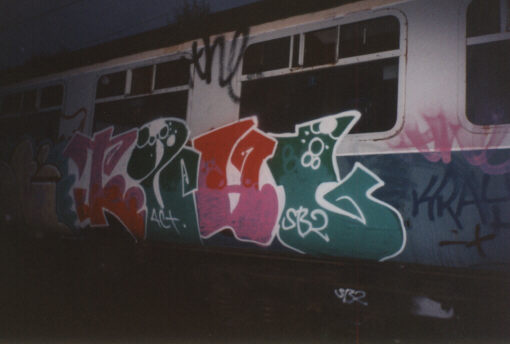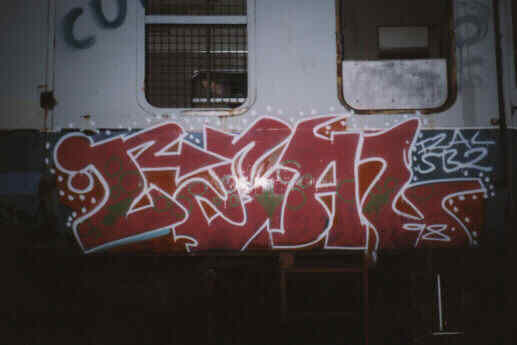


first published in Burngreave Messenger
In the endless talking shops and paper productions of the State’s community regeneration initiatives, graffiti are signs that the area where they’re found is run down and neglected – signs to be eradicated so the area can start to become orderly and recover self-respect.
Many of us who live in such an area – Burngreave, in Sheffield – think otherwise. Graffiti are signs of life self-generating in a dying wasteland: decorative, clever, intriguing, signs of active resistance against the monotonous concrete with which the State and private industry has long sought to colonise, control and stifle the life of our area.
So the Burngreave Messenger interviewed a local graffiti artist, Izal, who has refined his talents over nine years of transforming grey slabs with outbursts of colour. Spraypainting graffiti, he told us, gives the artist a buzz, an adrenaline rush so good it’s addictive. In the early days, every aspect of doing graffiti contributed to the buzz: nicking the aerosols (a point of honour among the penniless artists), working illegally on walls and trains, often in physically dangerous situations, just so the maximum number of people would see their tags (the chosen names or combinations of letters or numbers unique to each artist). Izal reckons that he alone might have done 5000.
Guerrilla artists whose work appeared suddenly and just as quickly vanished – cleaned off, demolished or overpainted – only to reappear endlessly repeated with ever more sophisticated variations (once you know a tag, you begin to see it everywhere). Deliberately transgressive and transient, graffiti art rapidly developed abstract styles in which original letters were transformed to the edge of being undecipherable – akin to the abstract calligraphic designs on Middle Eastern mosques. This is the art to be found on walls in Burngreave. We are fortunate.
But art that’s inherently transitory. Izal, in order to preserve and develop his work, has turned from concrete to canvas (ironic that the flimsy medium is more durable). He hopes to make a living by selling work and teaching.
And if it’s the transitory nature of this art that’s led to its rapid, diverse and subtle development into unimagined realms of calligraphic abstraction, why should we argue against the determination of the environmental cleansers with their brushes and pickaxes?
Well, because it’s highly decorative, an improvement of our visual environment, and because there’s a clear rule to follow, which is the rule agreed within the community of the artists themselves: never paint over someone else’s work, unless you’re going to paint something more highly developed – something better. Are the cleaners and scrubbers who make and carry out the policies of the Council and New Deal able to give us something better? I doubt it.
Street art lives on.
19 March 2001
tags to look for: IZAL SB2